There are many perennials that flower in late summer and well into autumn – the wonderful sedums for example – but it’s the autumnal fruit we look forward to most of all. What had been pretty blossoms in spring spend all summer developing into a real natures bounty, one that feeds the stomach as well as the soul.
I had to jiggle the title of this blog so as not to be seen as stealing the titles of one of Susan Irvine’s most lovely books – ‘Rosehips and Crabapples’. Susan, too, delights in the fruits that are such an integral part of the autumn garden, although I have also added berries, as so many of our ornamental tress and shrubs form fruit that although not particularly edible, are very decorative.
Viburnum, Sorbus and Cratageus are all plants that share with us their flowers in spring and then their berries in autumn, and our gardens would be much barer without them. So many people concentrate on the fleeting beauty of flowers, when often berries and fruit give a far longer display and also feed birds and humans alike. The viburnums are not well recognised for their berries as their flowers are so lovely and very often scented, but many of them carry fruit well into autumn that are just as decorative. In our garden at the moment, Viburnum wrightii with its heavily pleated leaves is laden with berries of the brightest red that hang like tiny Christmas baubles, and the Viburnum opulus cultivars are literally dripping with orange, yellow and red translucent fruit that the birds absolutely love.
Surprisingly though, the birds head for the dry, pithy berries of Sorbus first, and very often the only evidence of their existence are the remains of bunches under the trees. It’s a bit of a shame as they are incredibly pretty in their pastel shades of pink or brightest orange – I wish those birds would steer clear for just a few weeks longer so we can enjoy them for a few weeks at least. Thankfully, the miniature rowan – Sorbus reducta – is so close to the ground by comparison that it must pose a threat to the bird’s safety and the berries linger a little longer.
The much maligned hawthorns are stunning at the moment. On my morning walk and following yesterday’s rain, the countless thousands of berries looks particularly pretty. The locals say a good crop of hawthorn berries means a cold winter – I’m not sure how much truth there is in this. In our garden we have many other hawthorn species as well, and some of those boast even more spectacular fruit crops than the common English hawthorn of the hedgerows, some the size of small crabapples.
Jelly-making has become a daily activity as this year our crabapples are completely laden. Malus purpurea makes the prettiest jelly, a very deep crimson, but this morning I noticed our ‘Wychwood Crab’ – a chance seedling of Golden Hornet found in our garden – is loaded with fruit and I might try making some jelly with that. I’m suspecting the result will be orange, but I’m never certain.
We love crabapples, and if forced to have only one small tree in our garden, it would be an easy decision for us, although deciding which variety might pose a problem. Over the years we have collected many cultivars and species and each have their own distinctive charm. Some hardly fruit – such as the common Malus ioensis (or Betchel Crab) but make up for it with flower power. I, however, value the ones that knock your socks of with flowers in spring and fruit and coloured leaves in autumn. At the moment, we love our Malus ‘John Downie’ which is laden with pale cream flowers in spring and is now bowed down with the weight of bright orange fruit, with hints of autumn colour beginning to develop. Another favourite is ‘Jack Humm’. We have him espaliered against the side of what was our children’s cubby but is now affectionately known as our ‘stuga’ (Swedish for cabin). Jack has generous flowers in spring, and huge crabs that take their time to colour to a delicious bright red. The fruit are so hard that the birds leave them to last by choice as so we can enjoy them right into winter. The effect is particularly good on an espaliered specimen such as ours.
The stars of our autumn garden however (not counting coloured leaves, of course) are the rosehips. People who only grow hybrid teas really do miss out on something special. Wandering though our garden at the moment, there are hips of all colours – red, orange, black and brown – of sizes ranging from tiny to the size of small tomatoes, and shapes that are either perfectly round to long, goblet shaped beauties. I can’t decide which I like the most, but I guess if I based my decision on which our visitors comment on the most, it would have to be the hips of Rosa rugosa and its various fruiting cultivars.
The huge, translucent hips of the rugosas are in varying shades from orange to the deepest red, and are so meaty that they can be nibbled on and not just by birds either. They hang in generous bunches and are just as beautiful as the flowers which preceded them. Not all rugosa cultivars fruit like this, so if you are wanting hips, make sure you chose carefully. ‘Frau Dagmar Hastrup’ is among the best, with her huge pearly pink single blooms and large hips, but for me the simple elegant species from which all the varieties originated – Rosa rugosa – is the loveliest of all.
As my husband keeps telling me though, size isn’t everything, and certainly the pretty cherry black hips of Rosa pimpinellifolia prove that. I adore this vigorous rose in spring – the whole bush is dotted generously with medium single flowers of the purest white and with clear yellow stamens – but it is equally lovely covered in its black hips in the months of autumn. They may not be as striking as those of the rugosa, but not everything has to hit you in the face to be of value.
And then there are the goblet shaped orange hips of Rosa moyesii and its cultivar ‘Geranium’. For their size, they are oddly light but a single leafless branch looks stunning when brought indoors. Which I guess brings me back to where I started – don’t just value flowers in the garden, or indoors for that matter. Discover and appreciate the aesthetic beauty that berries, fruit and hips can offer to both your garden and home.
#gallery-1 {margin: auto;}#gallery-1 .gallery-item {float: left;margin-top: 10px;text-align: center;width: 33%;}#gallery-1 img {border: 2px solid #cfcfcf;}#gallery-1 .gallery-caption {margin-left: 0;}/* see gallery_shortcode() in wp-includes/media.php */ Wychwood Garden in early autumn, with wonderful flowering sedums
Wychwood Garden in early autumn, with wonderful flowering sedums Viburnum wrightii has bright red fruit that hang like tiny Christmas baubles
Viburnum wrightii has bright red fruit that hang like tiny Christmas baubles Bright orange berries on a Sorbus cultivar
Bright orange berries on a Sorbus cultivar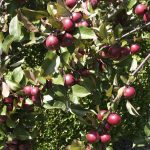 Huge red-fleshed fruit on Malus ‘Huonville Crab’ – probably an apple-crabapple hybrid
Huge red-fleshed fruit on Malus ‘Huonville Crab’ – probably an apple-crabapple hybrid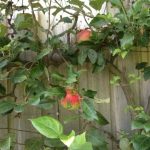 Malus ‘Laxtons Fortune’ espaliered against the shop
Malus ‘Laxtons Fortune’ espaliered against the shop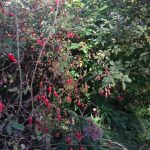 Rosa alpina hips
Rosa alpina hips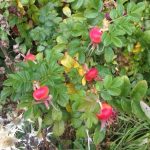 Rosa rugosa ‘Hansa’ hips
Rosa rugosa ‘Hansa’ hips Dark, cherry-black hips on Rosa pimpinellifolia
Dark, cherry-black hips on Rosa pimpinellifolia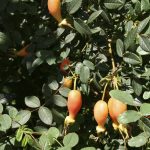 Goblet-shaped bright orange hips on Rosa moyesii
Goblet-shaped bright orange hips on Rosa moyesii
